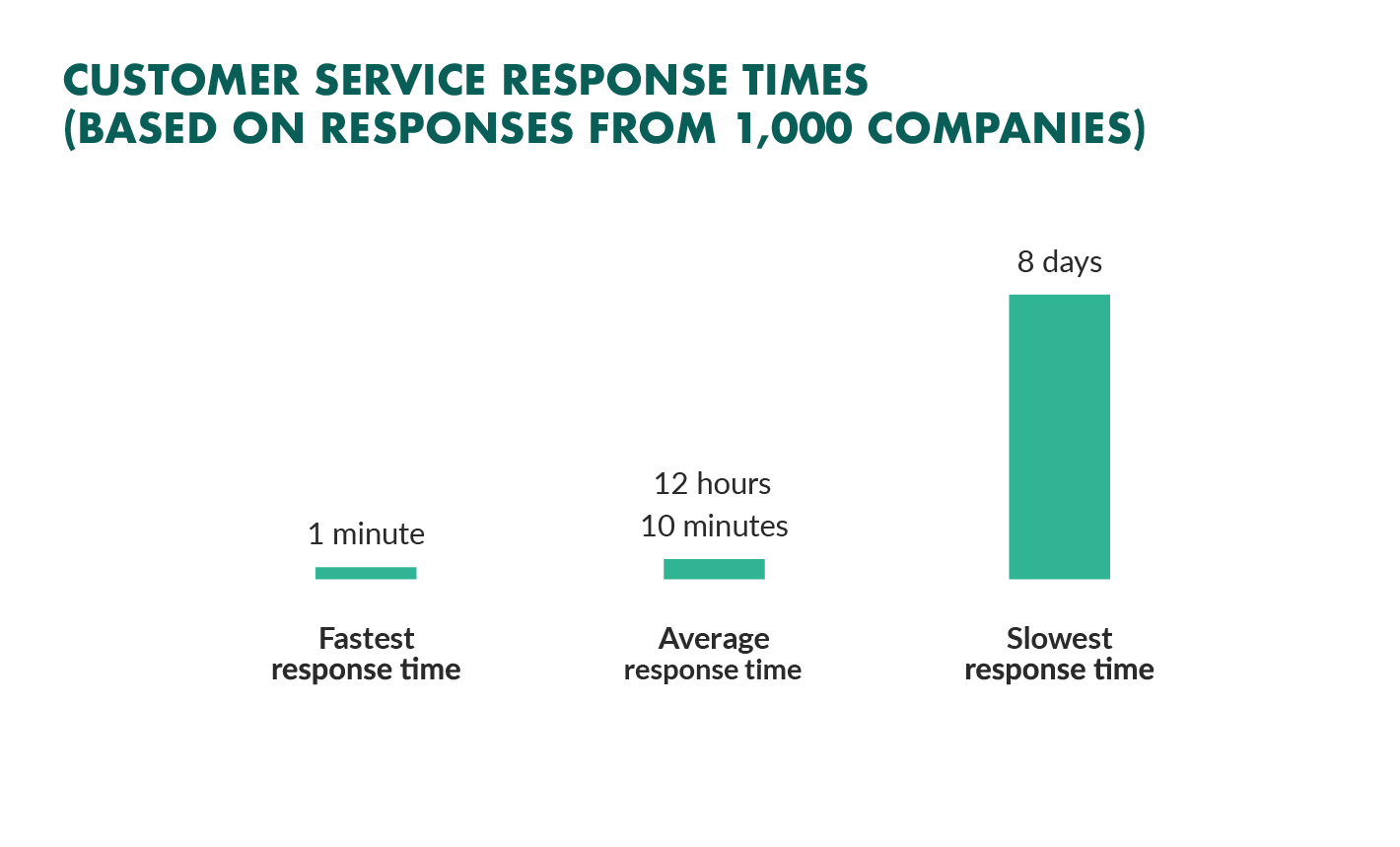What is normal response time?

What is the ideal average response time
Standards: What Is a Good Response Time
According to Google, the average response time should be under 200 milliseconds as it gives the feeling of an instant response. A web response time ranging between 200 milliseconds and 1 second is considered acceptable as users still likely won't notice the delay.
What is the average response time for KPI
In terms of industry benchmarks, customers contacting you by email generally expect a response within 24 hours. For social, the recommended benchmark is to respond in 60 minutes or less. For phone, the generally accepted response time is three minutes.
What is the average response time for API
between 0.1 and one second
Generally, APIs that are considered high-performing have an average response time between 0.1 and one second. At this speed, end users will likely not experience any interruption. At around one to two seconds, users begin to notice some delay.
Why is average response time important
The importance of average response time
This is significant as research indicates that around 71% of consumers make decisions based on the quality of their customer experience. A slow average response time can also have a negative impact on conversions.
Is 4 ms a good response time
4ms Response Time: A monitor with a 4ms response time is still considered fast and is generally more than adequate for the majority of users. If you're using your computer for tasks like web browsing, office work, or even casual gaming, you're unlikely to notice any significant difference compared to a 1ms monitor.
Is 5ms response time enough
A monitor with a response time of 5ms is good for gaming because it refreshes the pixels fast enough not to create motion blur. However, in most cases, it's very difficult for the average gamer to tell the difference between 1ms and 15 ms.
What is average response time metric
Average response time (ART) is a measurement of the amount of time a server or application takes to respond to all of its data inputs and requests. A lower average response time typically means better performance, as the server or application takes less time to respond to new requests.
What is considered a good KPI
A good KPI provides objective and clear information on progress toward an end goal. It tracks and measures factors such as efficiency, quality, timeliness, and performance while providing a way to measure performance over time. The ultimate goal of a KPI is to help management make more informed decisions.
What is an acceptable latency for an API
According to the IDC report APIs — The Determining Agents Between Success or Failure of Digital Business, over 90% of organizations expect a latency of less than 50 milliseconds (ms), while almost 60% expect latency of 20ms or less.
What is API latency vs response time
Latency refers to the delay in the system, while the response time includes both the delays and the actual processing time. Latency is the time duration in which a request is waiting to be handled. Until the request is handled, it is latent which means it's inactive.
Is 5ms response time good enough
A monitor with a response time of 5ms is good for gaming because it refreshes the pixels fast enough not to create motion blur. However, in most cases, it's very difficult for the average gamer to tell the difference between 1ms and 15 ms.
Is a higher response time good
Answer: Response time is a measure of how fast a pixel can change from one color to another, that is, from one shade of gray to another. The lower the response time, the better.
Is 4ms to 1ms noticeable
A 1ms monitor will have virtually no noticeable ghosting, even in the fastest-paced games or video content. On the other hand, a 4ms monitor may exhibit minor ghosting, particularly in high-contrast, fast-moving scenes.
Is 4ms too slow for gaming
Generally, 4ms is snappy enough for seamless gaming. But it depends on who you ask. Some may not be happy even with a two or 1ms display, let alone a 4ms screen.
Is 4ms response time too slow
4ms Response Time: A monitor with a 4ms response time is still considered fast and is generally more than adequate for the majority of users. If you're using your computer for tasks like web browsing, office work, or even casual gaming, you're unlikely to notice any significant difference compared to a 1ms monitor.
Is 1ms better than 0.5 MS
Ideally, 0.5ms vs 1.0ms difference is 1 pixel for every 2000 pixels/sec. But in real world, real GtG(100%) may vary a lot from this — however, 0.5ms GtG panels will usually have a better looking “GtG heatmap” than 1ms or 2ms GtG panels (colors are less likely to ghost during reduced overdrive settings).
Is 5ms response time too slow
A monitor with a response time of 5ms is good for gaming because it refreshes the pixels fast enough not to create motion blur. However, in most cases, it's very difficult for the average gamer to tell the difference between 1ms and 15 ms.
What is the KPI 80 20 rule
The 80/20 rule is a statistical principle that states that 80% of results often come from approximately 20% of causes. For example, in business, it is often said that 80% of sales result from 20% of clients.
What are the 3 types of KPIs
Types of KPIs include: Quantitative indicators that can be presented with a number. Qualitative indicators that can't be presented as a number. Leading indicators that can predict the outcome of a process.
Is 35 latency bad
Low latency is ideal as this means you are experiencing smoother gameplay. Generally, an acceptable latency (or ping) is anywhere around 40 – 60 milliseconds (ms) or lower, while a speed of over 100ms will usually mean a noticeable lag in gaming.



0 Comments